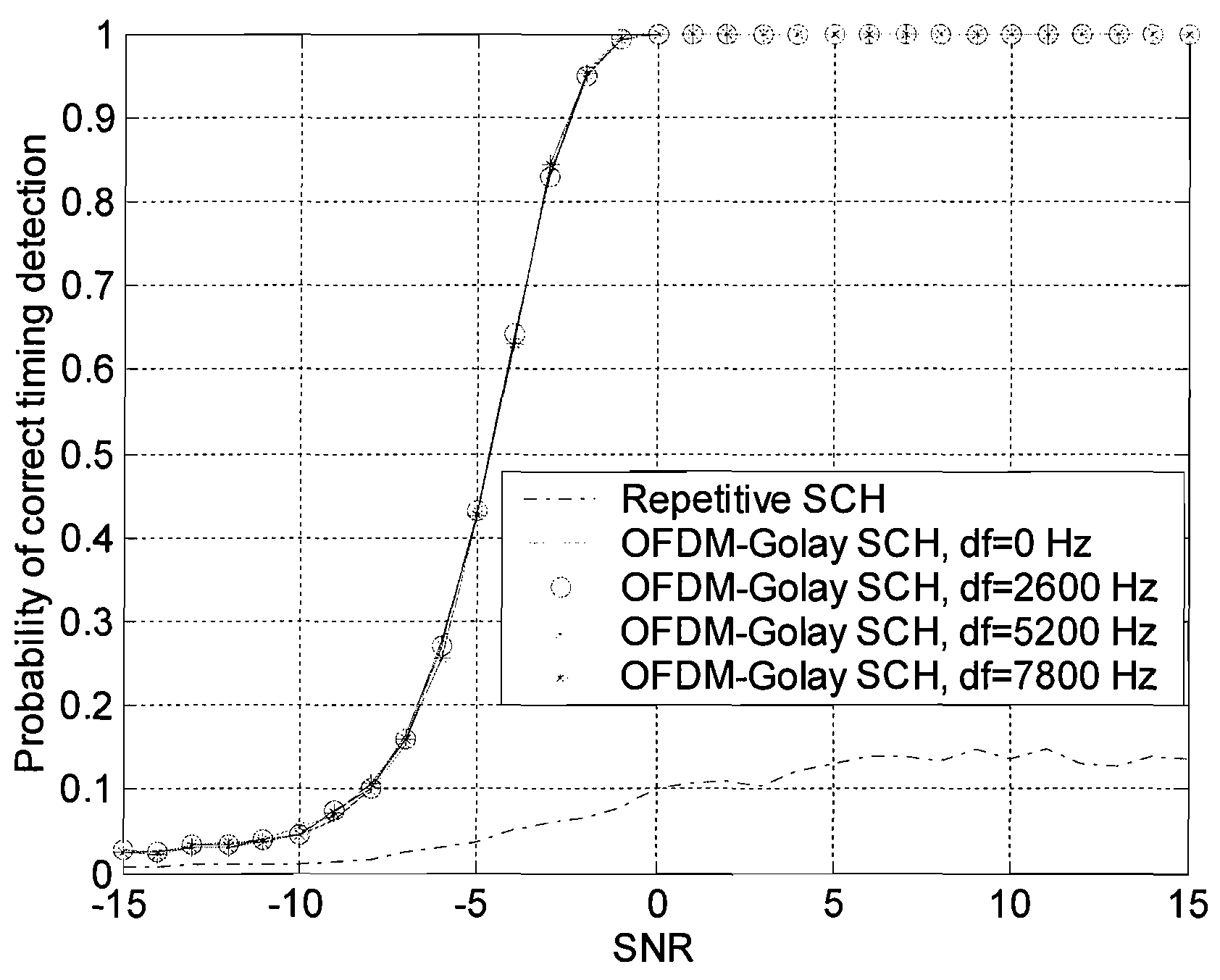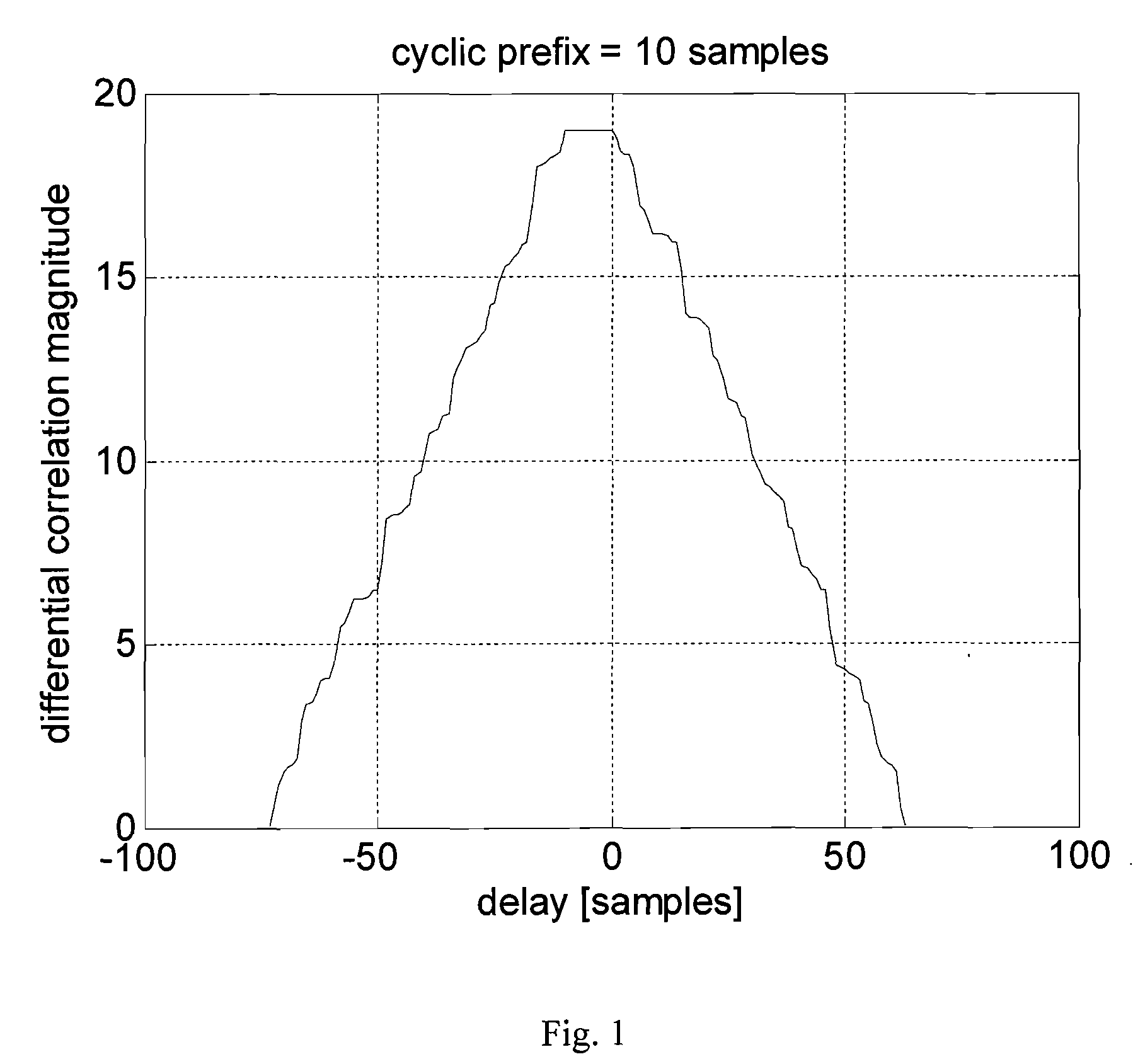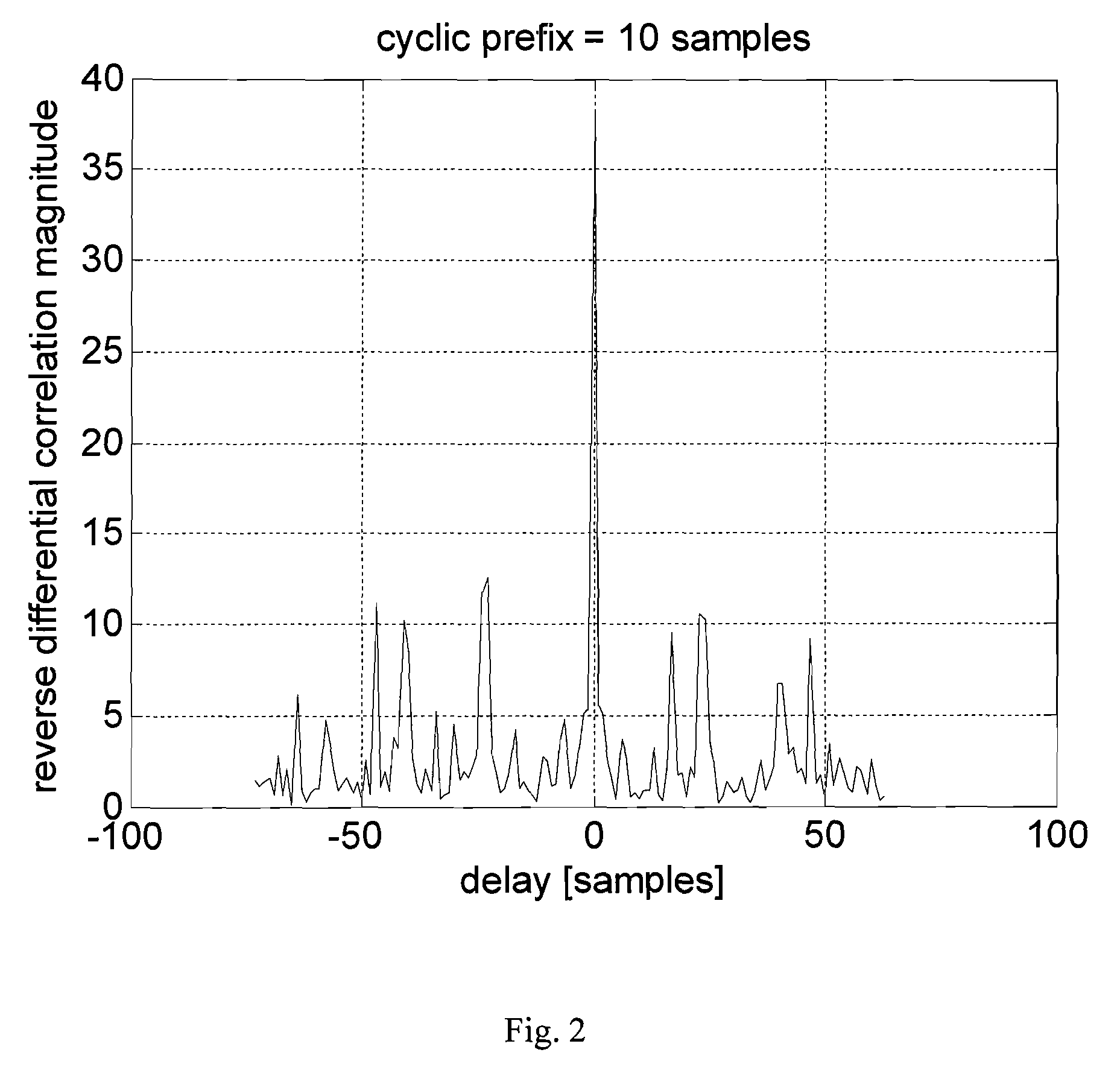Method for improving synchronization and information transmission in a communication system
a communication system and information transmission technology, applied in the field of radio communication system, can solve the problems of insufficient peak detection of differential correlation in a frame of received samples, very sensitive timing acquisition to noise/interference, and complicate the implementation of signal generator and demodulator, so as to reduce noise/interference sensitivity
- Summary
- Abstract
- Description
- Claims
- Application Information
AI Technical Summary
Benefits of technology
Problems solved by technology
Method used
Image
Examples
embodiment 1
[0051]To illustrate the design of centrally symmetric synchronization signals (6) and the properties of the corresponding reverse differential correlation functions (5), we generate the set of OFDM centrally symmetric synchronization signals starting from the assumptions given in Document 1: the sampling frequency is 1.92 MHz, the sub-carrier spacing is 15 kHz, the maximum number of occupied sub-carriers is Nosc=76 out of totally N=128 sub-carriers within 1.92 MHz frequency band (the transmission bandwidth is 1.25 MHz). The occupied sub-carriers are modulated by the elements of a pseudo-random sequence from the set of sequences with good cross-correlation properties. The different sequences from the set are labelled by the different cell identification numbers (IDs). After the DFT demodulation of the received OFDM signal the transmitted sequence can be identified by de-mapping from the sub-carriers, followed by a certain signal processing. Low cross-correlation between sequences con...
embodiment 2
[0075]The timing acquisition performance results for the signals from Embodiment 1 has demonstrated that if the frequency error is above a certain threshold, the differential correlation produces better timing acquisition than the reverse differential correlation, while bellow a certain frequency error it is opposite.
[0076]This result suggests that if the frequency error during the initial cell search is above 2 ppm, it would be beneficial that the synchronization signal is both centrally symmetric and periodic. Such a signal could be detected in the UE both by the differential correlation and the reverse differential correlation, depending on UE's cell search mode, i.e. depending on the maximum expected frequency error in between the carrier frequency of received signal and the frequency of the reference RF signal in the receiver.
[0077]Thus, the initial cell search the synchronization signals transmitted from the base stations should be performed by using the differential correlati...
embodiment 3
[0084]As mentioned above, the error tolerance zone in practice cannot be longer than a few samples. In that case, however, even the differential correlation (used to detect the repetitive synchronization signal from Document 1) shows rather bad performances at high frequency errors, as it can be seen in FIG. 5, where the timing acquisition performances of the signals from FIG. 3 are evaluated with the tolerance zone of 2 samples.
[0085]The reason for bad performances of the differential correlation lies in the plateau shown in FIG. 1, which makes it highly probable that the noise will produce a correlation peak at the delay within the correlation plateau less than the zero (correct) delay. Thus, the curve corresponding to repetitive signal converges very slowly to the value 1 with an increase of SNR.
[0086]The previous discussion about the different types of the ambiguity functions leads to consideration of other types of the pseudo-noise sequences, with ambiguity functions more toler...
PUM
 Login to View More
Login to View More Abstract
Description
Claims
Application Information
 Login to View More
Login to View More - R&D
- Intellectual Property
- Life Sciences
- Materials
- Tech Scout
- Unparalleled Data Quality
- Higher Quality Content
- 60% Fewer Hallucinations
Browse by: Latest US Patents, China's latest patents, Technical Efficacy Thesaurus, Application Domain, Technology Topic, Popular Technical Reports.
© 2025 PatSnap. All rights reserved.Legal|Privacy policy|Modern Slavery Act Transparency Statement|Sitemap|About US| Contact US: help@patsnap.com



